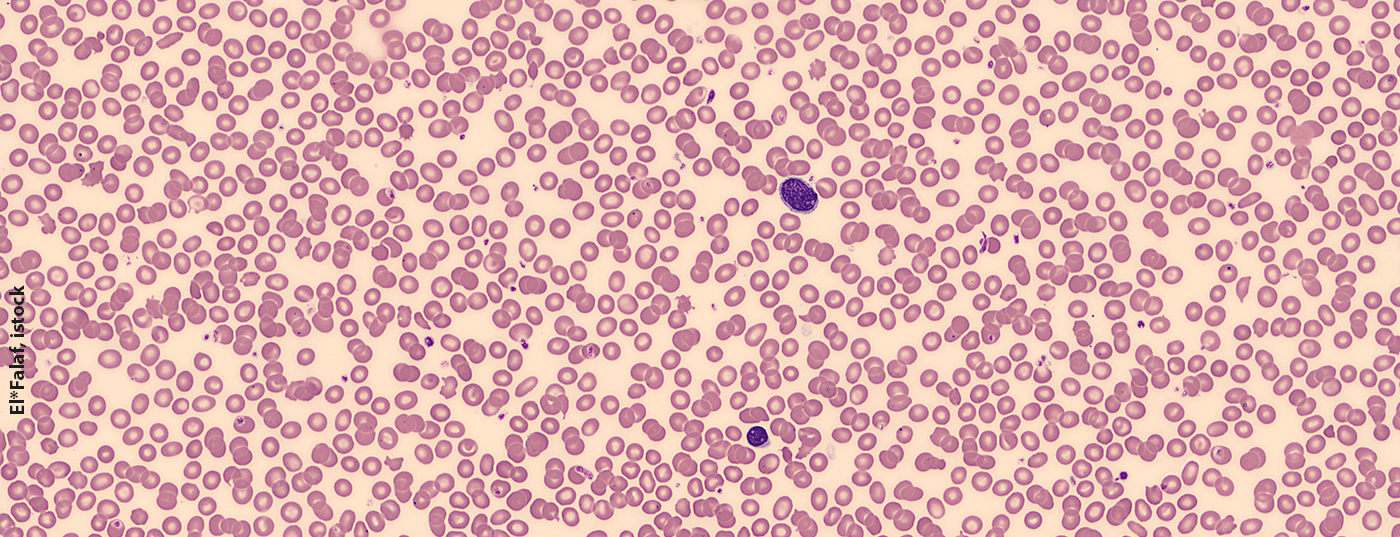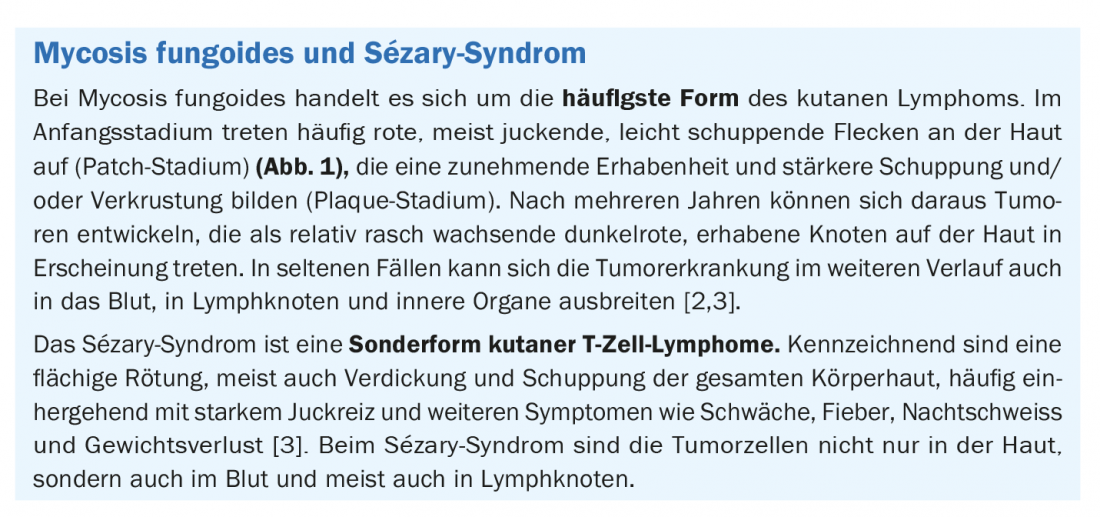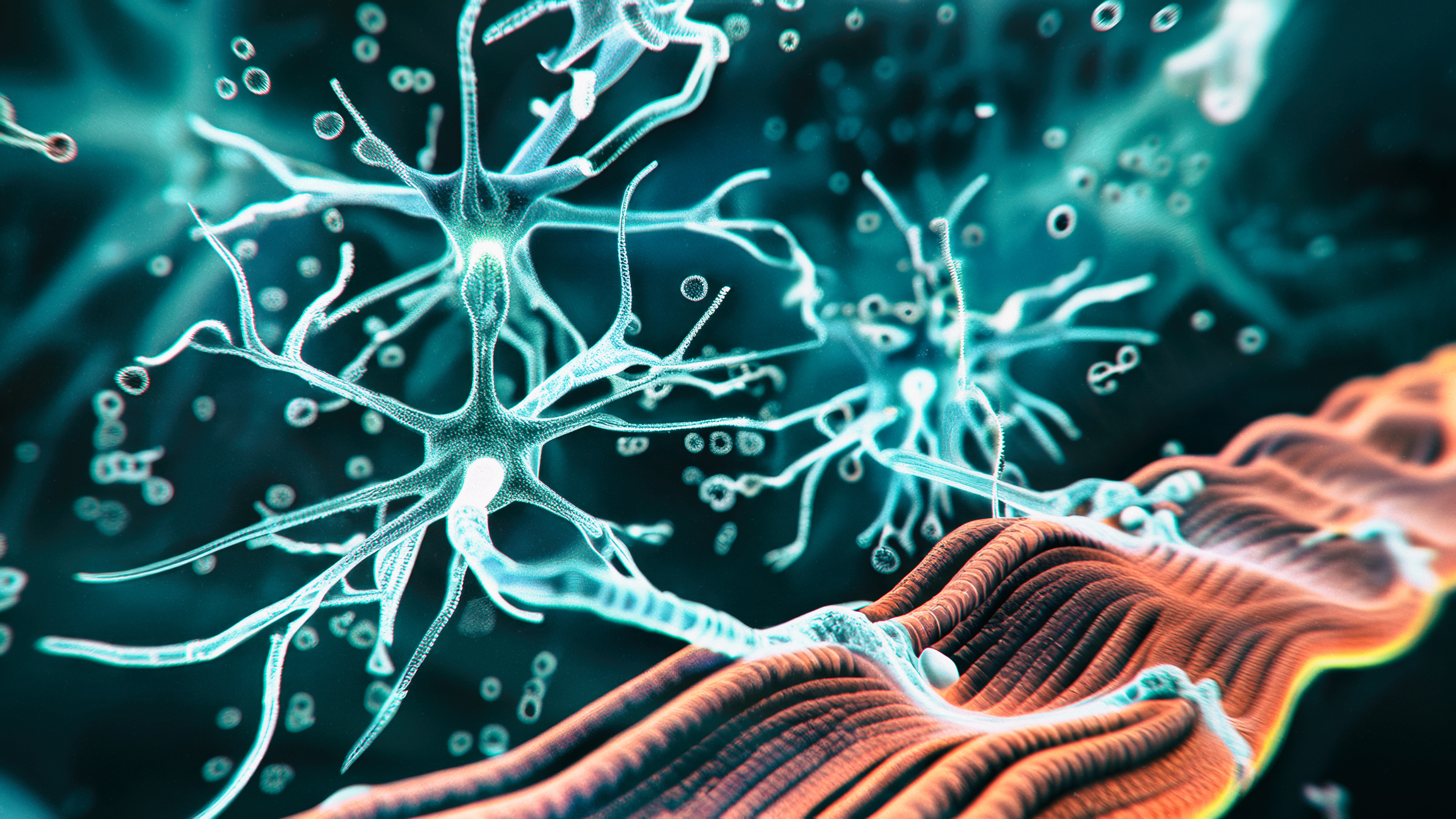As the disease progresses, the tumor cells in leukemic variants of cutaneous T-cell lymphomas spread not only in the skin but also in the blood and lymph nodes. Although an increasing number of extensive sequencing studies point to genetic variations, the driver mutations are not yet known. A new study has identified STAT5 as a potential therapeutic target.
Cutaneous T-cell lymphomas (CTCL) are a group of non-Hodgkin’s lymphomas that originate from T cells and primarily affect the skin. Mycosis fungoides (Fig. 1) is the most common form and accounts for about half of all cases. Sézary syndrome is an erythrodermatous cutaneous T-cell lymphoma, mainly affecting people over 50 years of age. Both Sézary syndrome and mycosis fungoides are leukemic variants of cutaneous T-cell lymphomas (L-CTCL). So far, the etiology is not yet clear. Although abnormalities with an increase in genetic material on chromosome 17q encoding STAT3/5 genes have been reported in over 50% of CTCL patients, it is unclear whether this results in increased oncogenic STAT3 and/or STAT5 activity and whether it is a potential therapeutic target. STAT3 and STAT5 are transcription factors for the transformation of blood cells, i.e. a kind of genetic light switch capable of turning genes on and off.

High sensitivity to STAT5 inhibition
At this year’s ADF Annual Meeting, a scientific study was presented integrating pharmacological interference studies and cancer genome sequencing to find out more about functional consequences of chromosome arm 17q abnormalities and the possible efficacy of JAK-STAT blockade [1]. To this end, whole genome and primary cell sequencing was performed in a cohort of 4 patients with Sézary syndrome and 2 patients with advanced leukemic mycosis fungoides. Genomic analyses revealed increased chromosome 17q copy number in 5 of 6 patients, which correlated with an increase in STAT3/5 mRNA expression and protein levels. Immunohistochemical analysis of the skin biopsies, which showed STAT5 activation, supported these findings.
IQDMA – a little-studied STAT5 inhibitor in focus
Functional in vitro studies of various JAK and STAT inhibitors showed that CTCL cell lines and skin samples from patients exhibited high sensitivity to STAT5 inhibitors. IQDMA, a poorly studied inhibitor of STAT5 signaling showed particular selectivity for L-CTCL single samples with chromosome 17q gain and is currently being investigated using an in vivo transplantation model for potential efficacy in inhibiting lymphoma growth in skin.
In conclusion, 17q gains are characteristic of L-CTCL in advanced stages and STAT5 in particular appears to act as a therapeutic target. Further preclinical development of specific STAT5 inhibitors and their clinical validation may eventually contribute to new options for the treatment of L-CTCL.
Congress: Arbeitsgemeinschaft Dermatologische Forschung 2021
Literature:
- Dey S, et al: STAT5 is a therapeutically targetable vulnerability in leukemic cutaneous T-cell lymphoma. P205, Translational Research ADF Dermatology Awards, ADF Annual Meeting 3/6/2021.
- Deutsche Leukämie- & Lymphomhilfe, DLH-Informationsblatt Haut- Lymphome (DLH info 70 III/2019), www.leukaemie-hilfe.de (last accessed 17.05.2021).
- German Cancer Society, www.krebsgesellschaft.de/onko-internetportal (last accessed May 17, 2021).
- Porto AC, et al: Mycosis fungoides: reflectance confocal microscopy and its role in the diagnosis. Appl Cancer Res 2018; 38 (10), https://link.springer.com/article/10.1186/s41241-018-0061-0
DERMATOLOGIE PRAXIS 2021; 31(3): 39 (published 6/1/21, ahead of print).













